rustybucket
New Member
Ok, so my step-son had to do a project for his Ag class this year. He wanted to do something with deer hunting, but we couldn't really figure anything good out. We just moved into our new place in Dec of this past year so the land is still VERY new to us. We put in a garden in the spring and had limited success. This summer we began focusing on improving the soil, mainly re-mineralizing the soil. Our land is old ag land that has now been through at least 1 cycle of pine timber. The high ground sits as old field presently, and has been that way for 5-6 years.
So, we kinda came up with combining the two on the premise that if our garden soil is demineralized, then so are our food plots. If we re-mineralize our garden, would we benefit from doing the same to our plots?
A little background on re-mineralization, as it was new to me this summer.... It goes a little something like this: Through years of intensive agriculture we as a nation, have essentially stripped our land of certain minerals and never replaced them. Normal farming (as I know it at least) focuses on N-P-K ONLY.... Well when you harvest a peanut, tomato, corn, bean, cotton, pine tree....etc from a field you are taking more than N-P-K from that field. You are taking calcium, boron, magnesium....etc. Most farmers never replace these (with exception of calcium in the form of lime.
According to the internet, as the soil becomes mineral and nutrient deficient plant vigor is reduced, pest problems become common, diseases are more likely and overall health of the plant is reduced.
When an animal eats a nutrient deficient plant the animal is not receiving proper nutrition.
It seems to be a well documented fact that produce available in stores today is not as nutrient dense as it was in the past and steadily declining to this day.
So, enough with the jargon, onto the project. I thought I'd share his process and results here, maybe it will be of value to others.
For the experiment there are 4 rows, numbered from North to south (left to right on pics). A bucket for us was a small pail, we are going to weigh it for the report, but it is less than a gallon.
Row 1: Control Row - No Limestone, No Granite, No Fertilizer
Row 2: 2 Buckets Granite Dust/Sand, 1 Bucket Limestone
Row 3: 1 Bucket Granite Dust/Sand, 1 Bucket Limestone
Row 4: No Granite, 1 Bucket Limestone
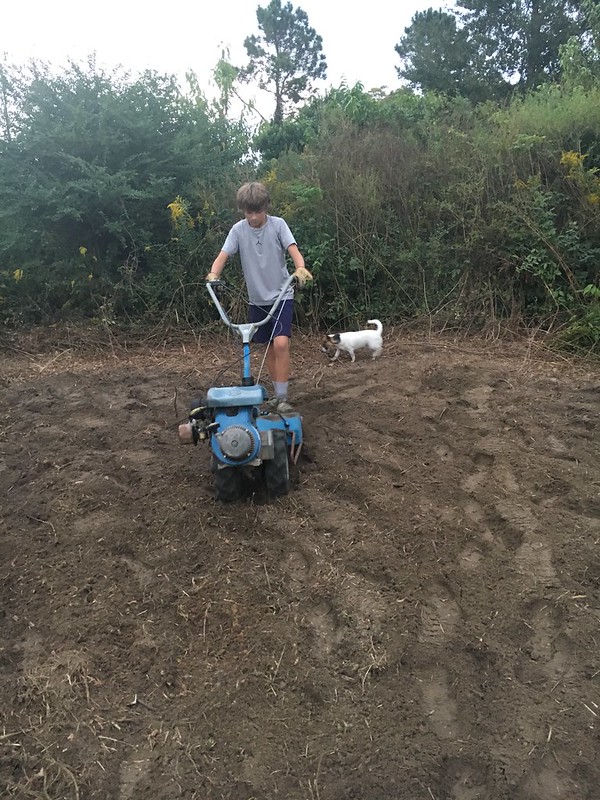

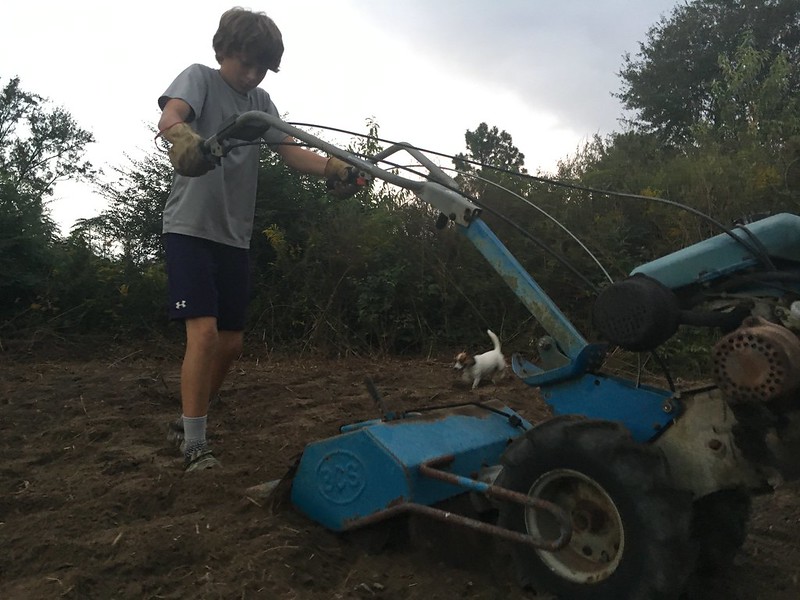

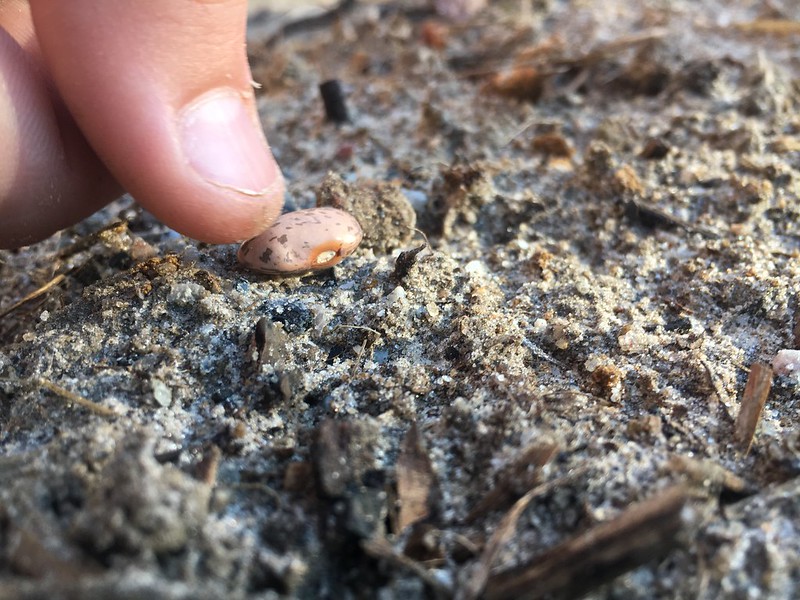
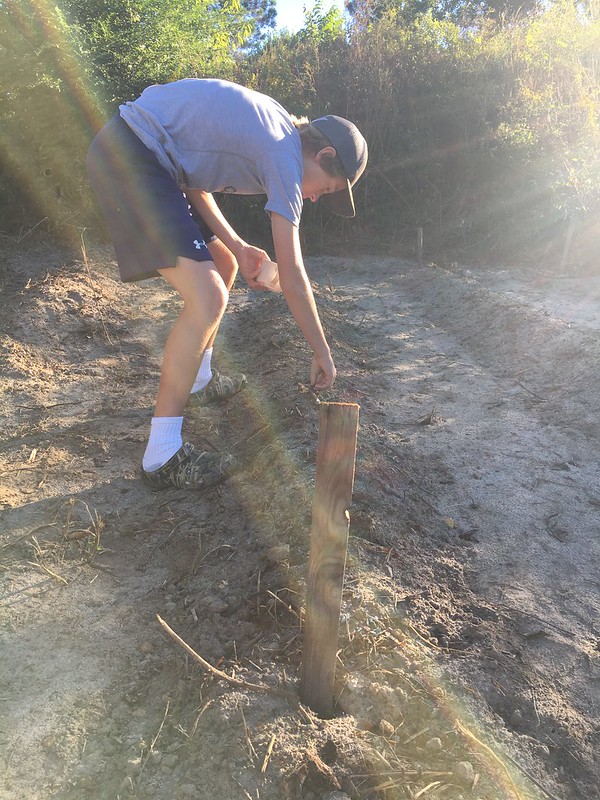
Setting up the irrigation!
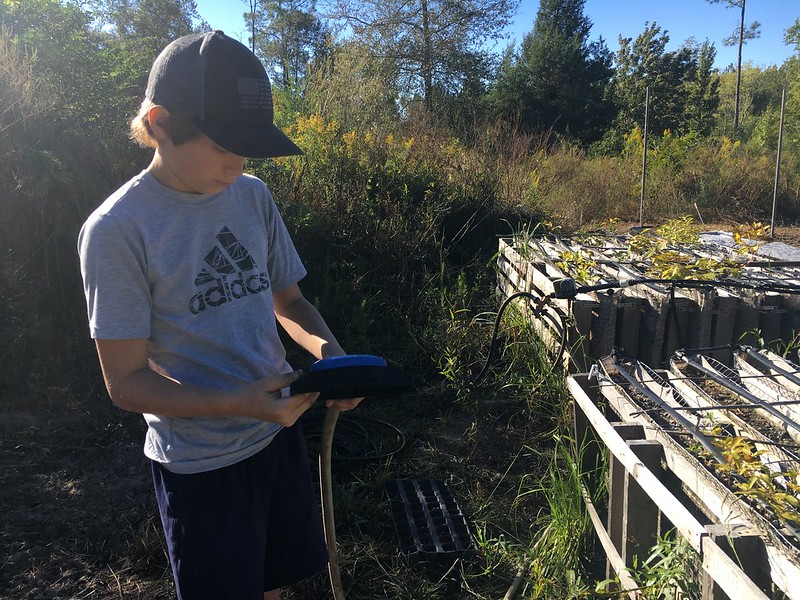
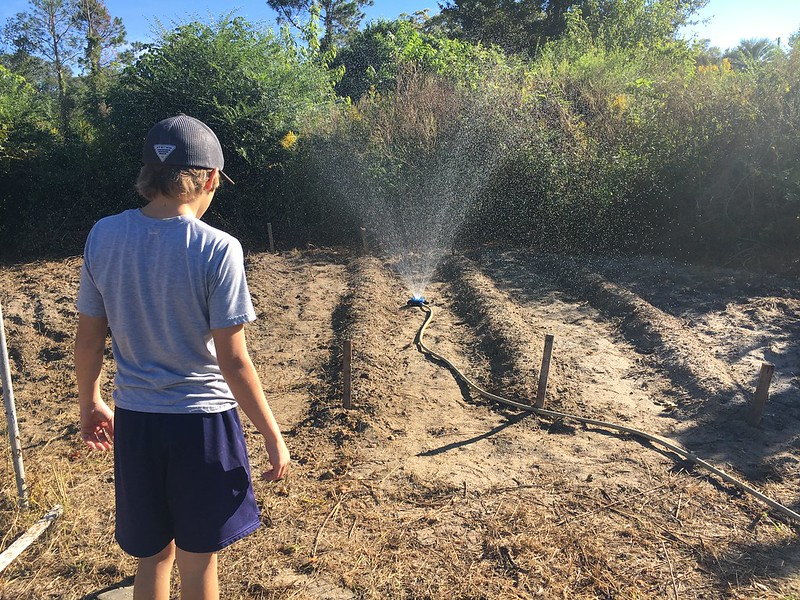
Now we wait for sprouting and growth. Will probably fertilize rows 2-4 with something standard like 10-10-10.
The nutrient density of the plants will be measured with a Brix meter that measures disolved sugars in the plant and is generally accepted as a way to measure the quality and nutrient density of produce.
So, we kinda came up with combining the two on the premise that if our garden soil is demineralized, then so are our food plots. If we re-mineralize our garden, would we benefit from doing the same to our plots?
A little background on re-mineralization, as it was new to me this summer.... It goes a little something like this: Through years of intensive agriculture we as a nation, have essentially stripped our land of certain minerals and never replaced them. Normal farming (as I know it at least) focuses on N-P-K ONLY.... Well when you harvest a peanut, tomato, corn, bean, cotton, pine tree....etc from a field you are taking more than N-P-K from that field. You are taking calcium, boron, magnesium....etc. Most farmers never replace these (with exception of calcium in the form of lime.
According to the internet, as the soil becomes mineral and nutrient deficient plant vigor is reduced, pest problems become common, diseases are more likely and overall health of the plant is reduced.
When an animal eats a nutrient deficient plant the animal is not receiving proper nutrition.
It seems to be a well documented fact that produce available in stores today is not as nutrient dense as it was in the past and steadily declining to this day.
So, enough with the jargon, onto the project. I thought I'd share his process and results here, maybe it will be of value to others.
For the experiment there are 4 rows, numbered from North to south (left to right on pics). A bucket for us was a small pail, we are going to weigh it for the report, but it is less than a gallon.
Row 1: Control Row - No Limestone, No Granite, No Fertilizer
Row 2: 2 Buckets Granite Dust/Sand, 1 Bucket Limestone
Row 3: 1 Bucket Granite Dust/Sand, 1 Bucket Limestone
Row 4: No Granite, 1 Bucket Limestone






Setting up the irrigation!


Now we wait for sprouting and growth. Will probably fertilize rows 2-4 with something standard like 10-10-10.
The nutrient density of the plants will be measured with a Brix meter that measures disolved sugars in the plant and is generally accepted as a way to measure the quality and nutrient density of produce.
Last edited:
